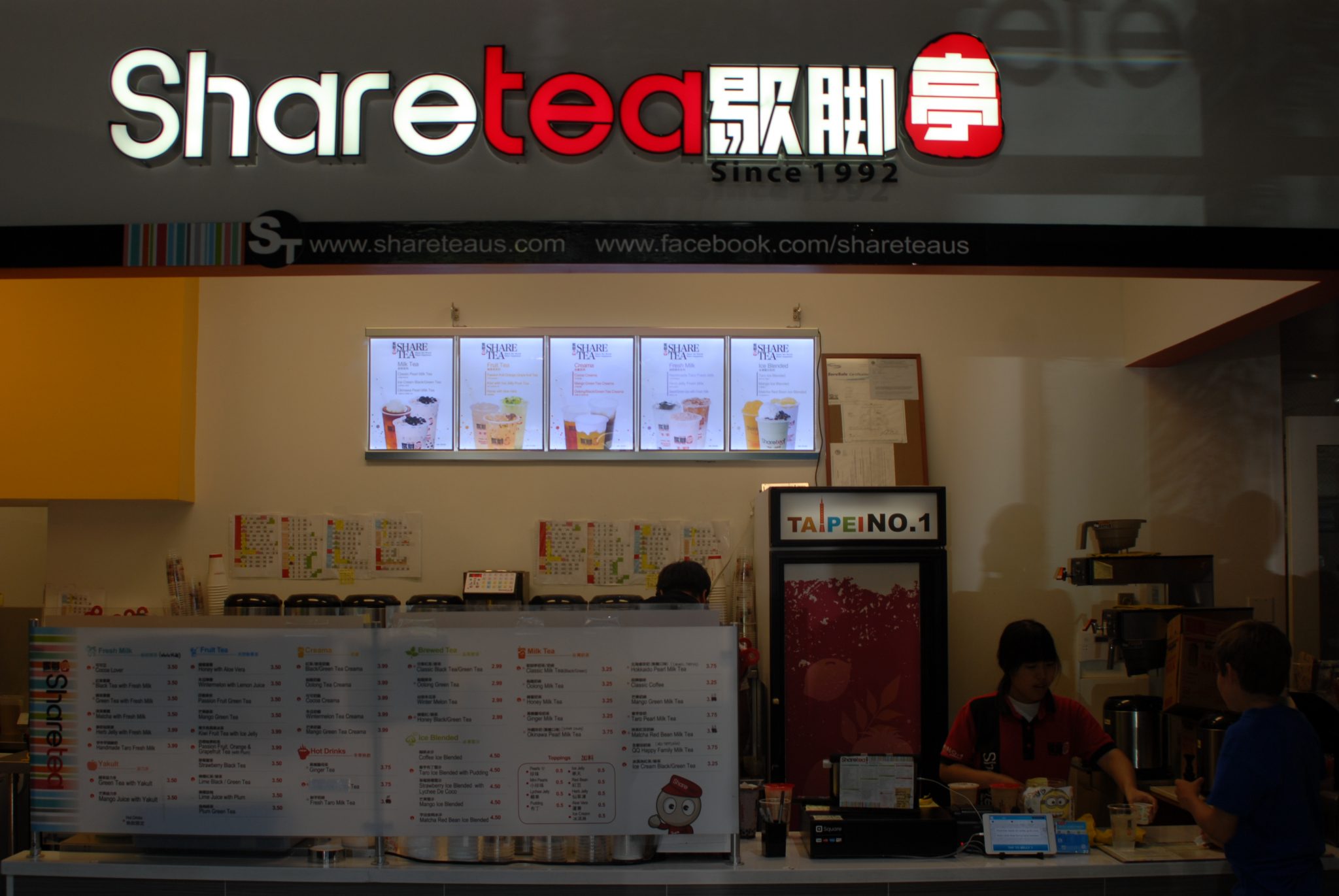
Bambū is a Vietnamese-style tea stop that has been open for seven months. Like many tea places downtown, Bambū offers a variety of milk tea flavors. With its forty different milk tea flavors, customers can experience anything from the classic taro milk tea to something more fruity, like pineapple orange. The tea place also doubles as a dessert house, specializing in sweet Vietnamese snacks as well as waffles.

Due to its Vietnamese style, what distinguishes Bambū from many popular tea places is that it also offers a unique take on a popular Vietnamese “halo-halo,” which is a shaved-ice type of drink with ice cream, a variety of boiled beans, condensed milk and fruit.
Bambū’s tea has a distinctively milkier flavor relative to its competitors. Also notable is the shop’s use of fresh ingredients and real fruit in some of its more exotic blends. Upon first sip of any drink, customers report a distinctive authenticity—one that is absent in popular milk tea chains such as Quickly.
Senior Amy Chen says, “I think that it’s better than Tpumps and Quickly’s. I think the flavor and ingredients used are more natural—less of the artificial syrupy flavor that Tpumps uses.”
Another up-and-coming tea place is Tea River, which has been open for two months now. In contrast to Bambū, which has lighter tasting tea, Tea River offers drinks that are thicker and sweeter. It also happens to serve stronger teas—most notably, the oolong tea, which is rather strong compared to the blends of Tea River’s competitors.
Since the owner of the restaurant is from Taiwan, the type of tea could be best described as “Taiwanese-style.”
Sophomore Virginia Chau says, “[The tea] is okay; it’s not bad. It’s better than Quickly because you can actually see them making tea, so it’s authentic. I would say it’s an eight out of ten.”
Similar to Bambū, it offers a wide selection of tea choices and desserts—a common trend among newer tea places. Among its dessert choices, Tea River primarily prides itself on its ‘ice snow.’ Unlike ‘snow ice,’ which is Asian shaved ice with toppings such as condensed milk and red bean, ‘ice snow’ is more akin to finely shaved ice cream.
Tea River is different from many popular chains downtown in that it is a small but spacious. Because of its quality tea and cozy interior, it is a popular place for people to bring their laptops and work, or “work.”
Kung Fu Tea is a low-key tea place that is also attempting to hold its own against the likes of the more established shops. According to customers, its tea is most similar to that of Quickly’s. However, sophomore Brittany Wan says, “It’s kind of bad compared to other places like Share Tea. It’s just not as good and not up to par.”
Wan adds, “The tea is kind of powdery. You can taste the powder.”
The young shop is still establishing itself. Much like Tpumps, customers at Kung Fu Tea are able to control the level of sweetness in their tea. Customers also have the opportunity to experiment with different flavors, including an OREO milk tea.
What distinguishes Kung Fu Tea from other tea shops is its desserts, most notably, their popular macarons. The macarons come in a variety of different flavors including pumpkin, rose, and passion fruit. The delicately decorated cookies and macarons are another standout, as the shop places extra emphasis on its desserts. The main selling point of Kung Fu Tea appears to be its desserts rather than its tea.
Kung Fu Tea also offers an interesting promotion absent from its competitors. To increase their viability amidst this high competition, Kung Fu Tea offers students a free upgrade to a larger size tea if if they show their student identifications.
Among these tea places, Sharetea is one of the more established and well-known. Share Tea is also one of the more expensive tea spots, at about $3.50 for a regular size. Can Share really compete with that price? Junior Kenny Ying says, “Well truthfully [the tea places] taste about the same.”
But even though some think the teas taste similar, Sharetea has a location benefit for Ying. He says, “It’s really convenient for me because its probably the closest to the library and I go to the library a lot.”
Unlike Bambū and Tea River, Share Tea is solely a tea place. It does not sell desserts. Sharetea offers tea that comes in the form of “creama,” which is tea with a foamy layer on top.
In contrast to the Vietnamese-styled Bambū and the Taiwanese style of Tea River, Share Tea draws on a combination of Taiwanese and Japanese styles of tea. With this Japanese influence comes very specialized flavors such as Okinawa milk tea and the beloved Hokkaido milk tea, which tastes similar to coffee ice cream. Share Tea often also combines different sized boba in its drinks, which also distinguishes it from neighboring shops.



